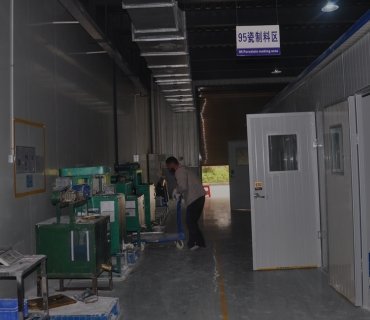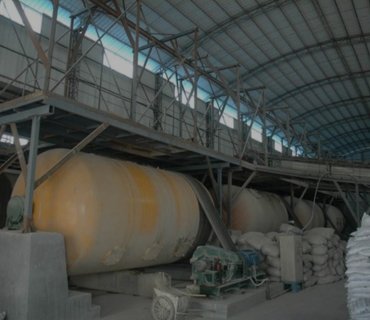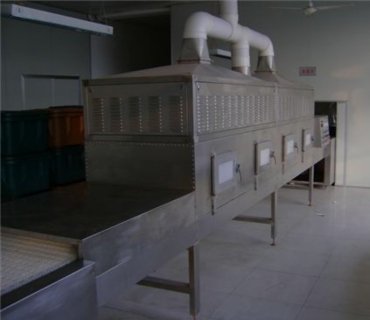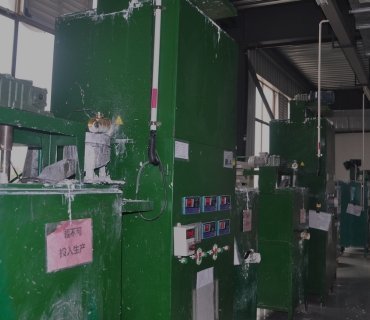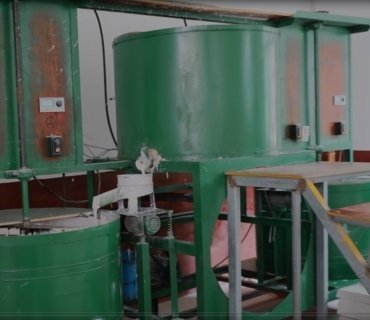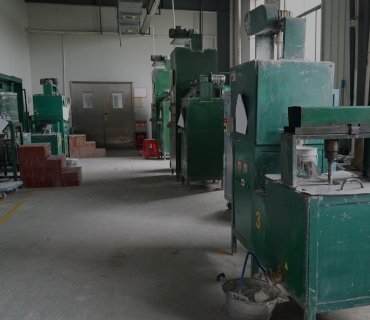Overview
The main process of preparing advanced ceramics: ceramic powder preparation -> ceramic forming -> sintering – machining ->inspection. The ceramic formulating is a key step in ceramic powder preparation. Its core lies in the precise control of raw material composition, particle size and uniformity to ensure the stability of subsequent forming and sintering processes and product performance.
When batching ceramic powder, the relevant process parameters will be slightly adjusted based on experience and the characteristics of the final product, ultimately forming the optimal ceramic formulating parameters. For example, the main control parameters in the powder mixing process of our company’s main ceramic material, 95%alumina, are as follows:
| Process parameters | Specifications and tolerances | |
| Baking time | 10 hours ± 20 minutes | |
| Material ratio | main material : 50Kg±50g, auxiliary material: 1000g±1g |
|
| Temperature | 150℃-210℃ | |
The preparation methods of advanced ceramic powders are divided into mechanical methods and synthetic methods, as described in the following table:
| Ceramic powder preparation | Mechanical method | Synthesis method |
| Mode | Mechanical crushing | Chemical milling |
| Advantages | Simple process , high output, low cost | Purity and particle size are controllable and uniformity is good |
| Disadvantages | Contains impurities, difficult to obtain fine particles | high cost |
Ball mill is the most commonly used crushing and mixing device. The crushing method is mainly based on impact and grinding. Its feed particle size is 6mm and the ball mill fineness is 1.5~0.075mm.
The main factors for ball mill
Intermittent ball mills are commonly used in production. The crushed material and grinding body are placed in a cylindrical ball mill. When the cylinder rotates, the grinding body (i.e., grinding balls) are driven to rotate. The grinding balls are brought to a certain height by the action of centrifugal force and friction. When the centrifugal force is less than its own weight, the grinding body falls and impacts the lower grinding body and the cylinder wall, and the powder in between is impacted and ground to achieve the purpose of crushing.
Ball mill speed
The higher the speed of the ball mill, the higher the crushing efficiency. It should be noted that when the speed of the ball mill exceeds the critical speed, it loses its crushing effect.
Density, size and shape of the grinding media
Increasing the density of the grinding media can enhance its impact force while also reducing the volume occupied by the grinding media, increasing the loading capacity and thus improving grinding efficiency. Larger grinding media have a greater impact force, while smaller grinding media have a greater grinding effect due to their larger contact area with the powder. The size ratio of the grinding media should be determined based on the properties of the powder.
Ball milling method
There are two types of ball milling: wet and dry. Generally speaking, wet milling is much more efficient than dry milling due to the splitting effect of water or other dispersants.
The ratio of material, ball and water
The ratio of material, balls, and water varies depending on the raw material’s water absorption and particle size, as well as the ball mill’s load. Generally, when grinding ordinary ceramic blanks with balls of varying sizes, the material:ball:water ratio is approximately 1:(1.5-2.0):(0.8-1.2). Currently, the trend in production is to increase the number of balls and reduce the amount of water, thereby improving grinding efficiency.
Ball mill diameter
The grinding body of the cylinder can also be increased accordingly, which will improve the grinding and impact effects, increase the grinding efficiency, and increase the feed particle size. At present, the ball mill for ordinary ceramics is developing towards large-scale and automated directions.
In the actual operation of the ball mill, some parameters need to be adjusted dynamically, such as the ratio of oleic acid to powder, which should be based on the trial production experiment of each batch of powder. The following table is a reference for some control parameters of our company’s 95% alumina powder during ball milling.
| Ball milling parameters | Specifications and tolerances | |
| Material ratio | Porcelain balls: powder = 2:1 | |
| Ball milling time | 22 hours ±20 minutes | |
| Ball mill speed | 40±2 rpm | |
| Powder particle size | 2.0um-3.2um | |
| Impurity cleaning | Clean the magnet screen every 10 plates. | |
| Ceramic ball weight | keeping 400±1kg | |
| temperature | ≤80℃ | |
| Ball mill lining | No lining falling off or wearing | |
When grinding ceramic raw materials, special attention must be paid to the chemical composition of the grinding body and the ball mill lining. This is very important for improving ball milling efficiency and reducing pollution during the ball milling process. The ball mill should be made of advanced ceramic materials such as alumina grinding balls, zirconia grinding balls, and ZTA grinding balls. The mill lining should be high-performance porcelain lining or rubber lining. The rubber lining will not introduce impurities into the slurry.
Ball mills are suitable for fine grinding of billets (raw materials) with a small variety and large scale, which do not require high material fineness, while vibration mills are suitable for fine grinding of billets (raw materials) with a large variety and small scale, which require high material fineness.




